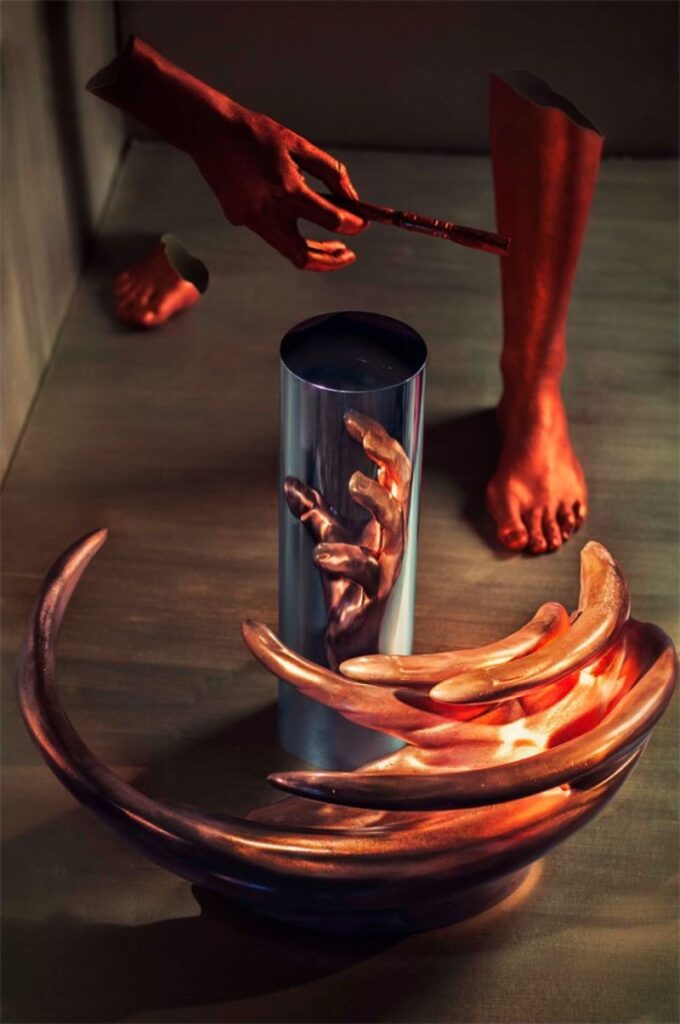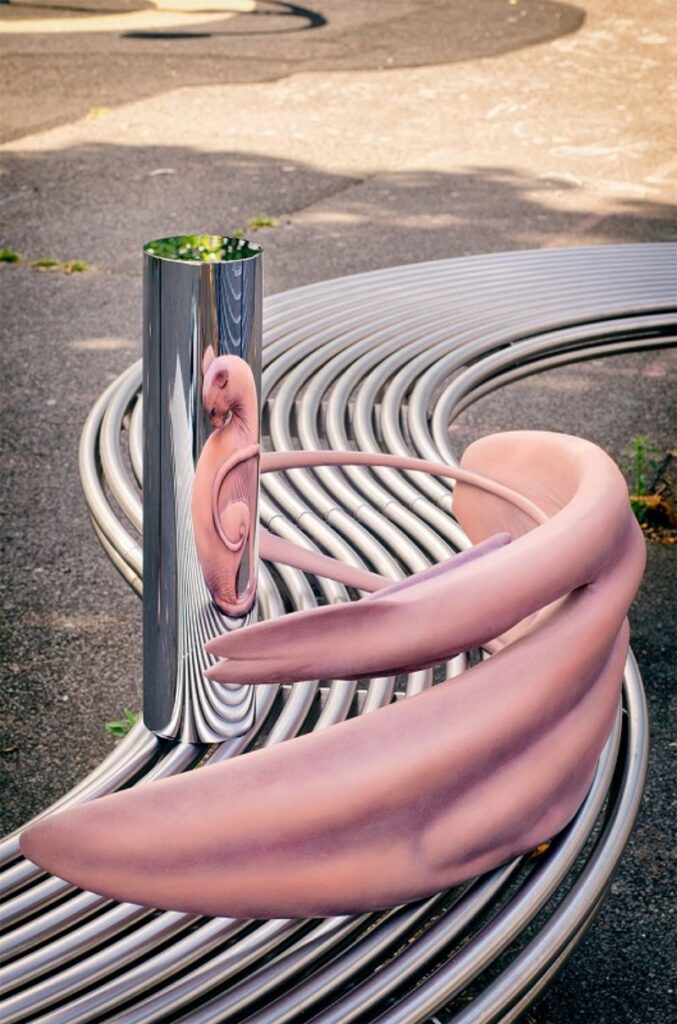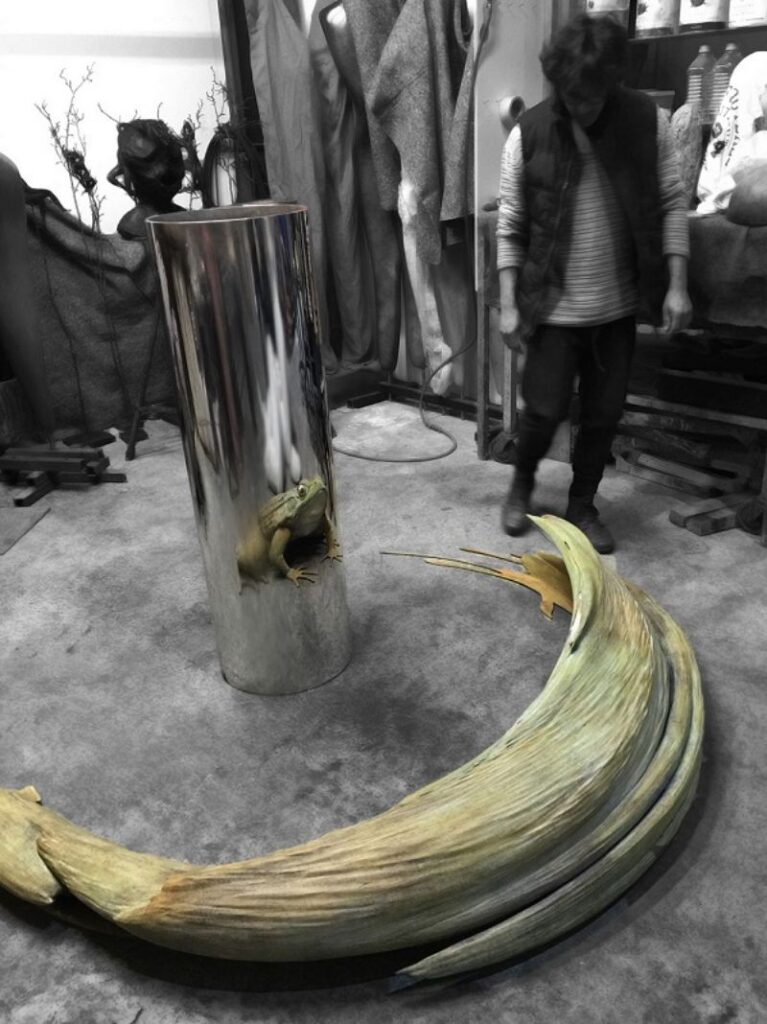Trippy Anamorphic Sculptures Revealed in Their Reflections

In 2003, Jonty Hurwitz found the inspiration for his disorienting new anamorphic sculptures in London’s National Portrait Gallery. There, he found others who shared his combined love of art and physics: “I wandered into the National Portrait Gallery and stumbled across a strange anamorphic piece by William Scrots (Portrait of Edward VI, 1546). Followed shortly down the aisle by The Ambassadors (Hans Holbein, 1533). My life changed forever. I rushed home and within hours was devouring the works of Escher, Da Vinci and many more. In a breath I had found ‘brothers’ in a smallish group of artists spanning 500 years with exactly the same dilemma as me.”
“The Ambassadors” is a pivotal Renaissance artwork by Hans Holbein. The painting is most famous for its use of anamorphosis, in which a seemingly skewed foreground disc transforms into a human skull when viewed from a particular angle. Hurwitz incorporates the same technique into many of his physical artworks, which are modeled and meticulously shaped from copper, resin, steel, and perspex. The sinuous, abstract sculptures are then placed next to a cylindrical mirror, which reveals the subjects’ true forms to the spectator.


When looking at these impressive sculptures, one might think that Hurwitz has modeled every painstaking detail from clay or hewn them from stone. In reality, most of his “molding” is done on a computer. Having first completed a thorough scan of the subject, such as a frog or human hand, Hurwitz then crunches the necessary numbers and measurements: “Generally I will 3D scan my subject in a lab and then work the model using Mathematica or a range of 3D software tools. I think the Π factor is really important in these pieces. We all know about this irrational number but the anamorphic pieces really are a distortion of a “normal” sculpture onto an imaginary sphere with its centre at the heart of the cylinder.” These complex mathematics could be thought of as Hurwitz’ “X Factor”—that strange, intangible quality that makes certain works of art iconic.![]()
![]()
These artworks bear a twisted and macabre beauty. The physical sculptures are already fascinating in their mangled, amorphic form. The fact that the cylinder transforms them into the spitting images of living things is only an additional visual treat. The bizarre allure of Hurwitz’ creations could not be clearer than in this representation of a fairy surrounded by butterflies. Titled “Childhood,” the work features a distorted copper piece reaching for the insects with stretched and misshapen hands.
On his website, Hurwitz draws attention to a sculpture called “The Hand That Caught Me Falling”:”This is the sculpture of the beautiful hand that caught my soul as it plummeted.” He also recalls a quote from the mathematical and creative genius, Albert Einstein: “The gift of imagination has meant more to me than any talent for absorbing absolute knowledge.”
Like Einstein, Hurwitz seems more than happy to exercise his mathematical acumen in his everyday work. In 2007, he co-founded Wonga, a loans site that continues to thrive in the UK to this day.




